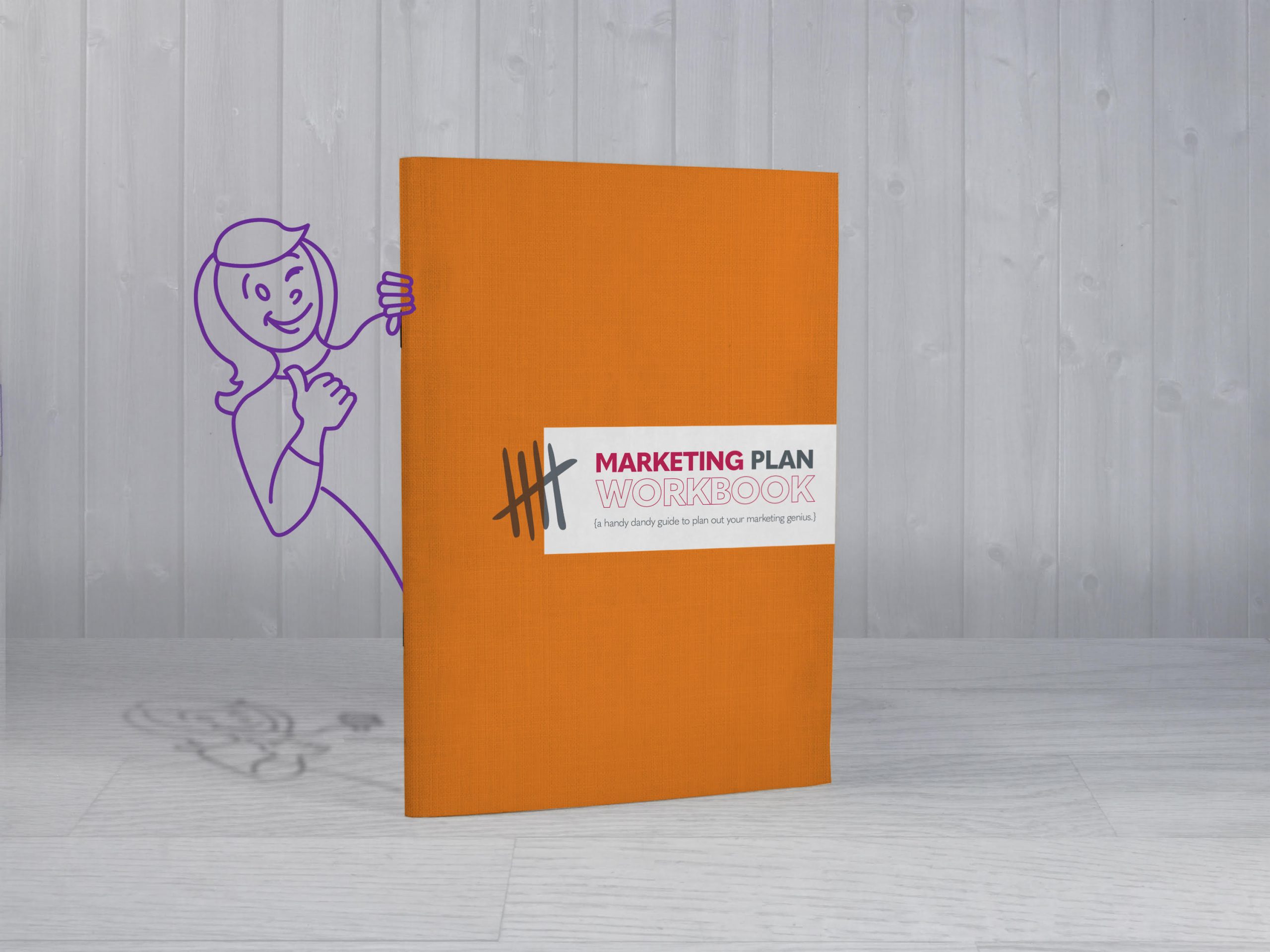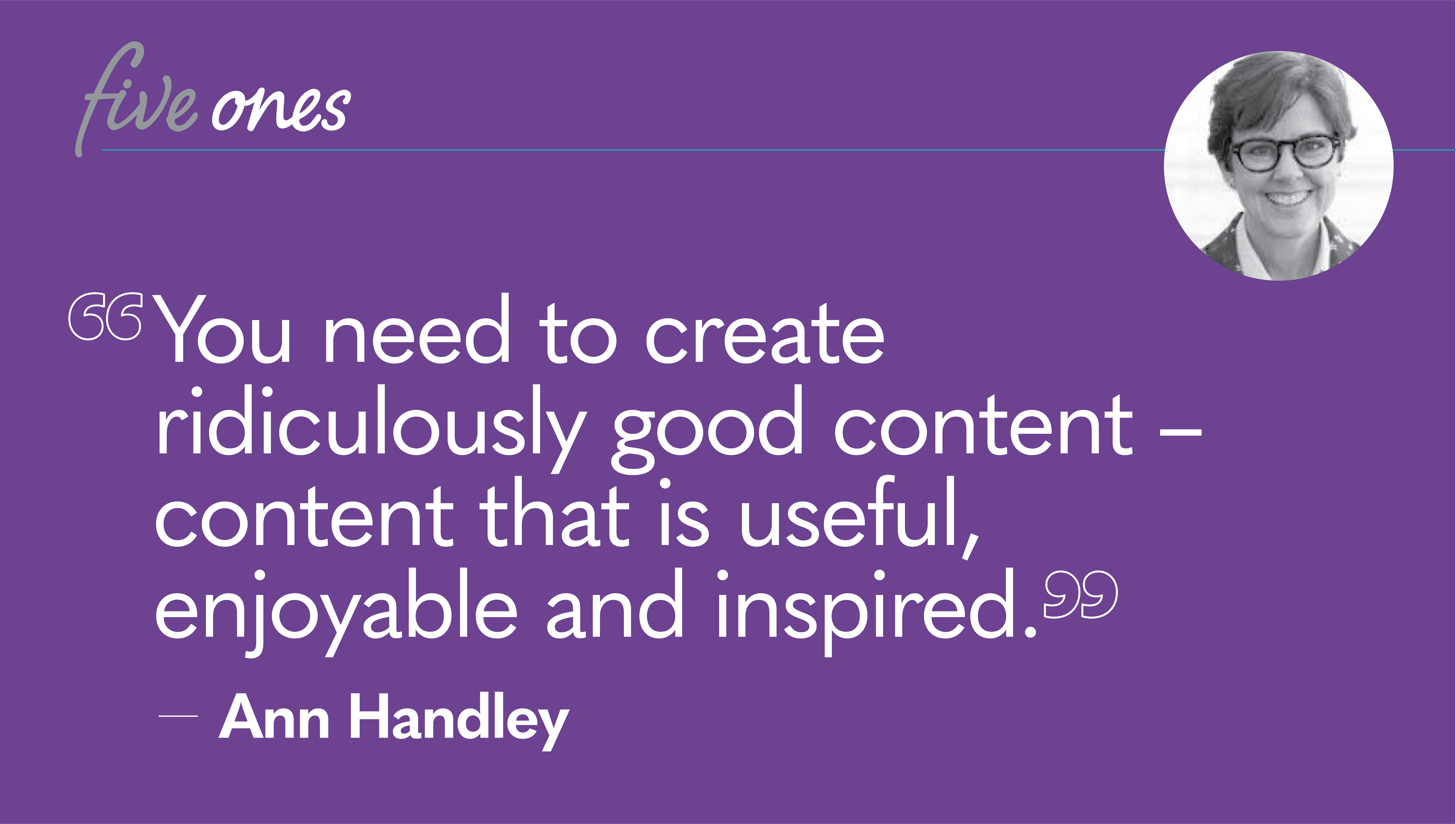
Content Marketing Strategy “Math”: Divisible, Additive, Multiplied, And Subtracted Content
As a nonprofit organization, content marketing remains your best chance to tell your story and create engagement with your community of supporters (and soon-to-be supporters). As part of your overall marketing strategy, storytelling has power to move people, inspire them, and connect with them in unprecedented ways. But, to create that kind of powerful content, you have to start with a brilliant content strategy.
Paul Young, a former director of charity: water, shares lessons that show how their innovative strategy helped them successfully create massive engagement and even influence people to become active ambassadors. That’s the dream for any nonprofit organization, but, again, it all starts with strategy.
You should start with a plan that guides your content creation, management, and distribution process and is geared towards meeting specific goals. It informs how you want to reach your audience, the goals you want to achieve, how to measure content performance, and what actions you will take to achieve those goals.
In other words, content strategy is about:
- Identifying your unique approach, the so-called “brand message,” and that unique value you can offer your audience
- Auditing existing content to see how it fits into the new strategy
- Defining what kind of content you need and how it will be produced
- Identifying the various distribution channels available to you and which will be most effective
- Identifying the tech and human resources you will need (For example, you might need email automation tools or a content management platform)
- How you are going to fund your content marketing campaign
For nonprofits, content management is particularly tough because you likely don’t have the same extensive marketing budget as a for-profit business. You really have to count your beans, which is why introducing some “math” into it is the perfect way to make content strategy work for you.
I’m talking about additive, divisive, multiplied, and subtracted content. I was reminded about divisible content from Column Five Media and Newfangled, and additive content from this article, but was searching for a system that I could use to help my clients develop their content strategy. And, so I created my own and here it is. These types of content strategy are highly economical, effective, and easy to implement for any nonprofit organization.
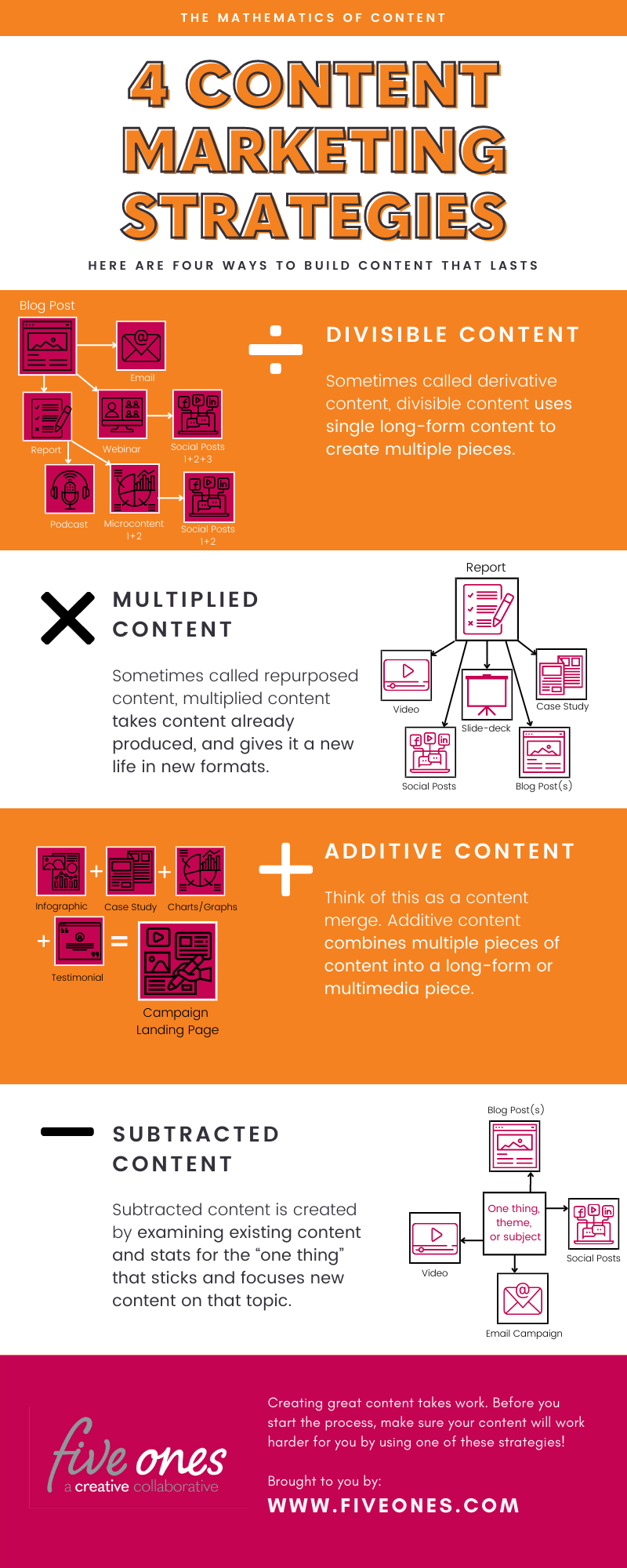
1. Divisible Content
Just like in math, divisible content can be divided or broken down into shorter pieces which can then be released on their own. Thus, a divisible content strategy, also called derivative strategy, is a particular approach where a single in-depth long-form type of content is used to create different kinds of smaller short form and micro-content pieces.
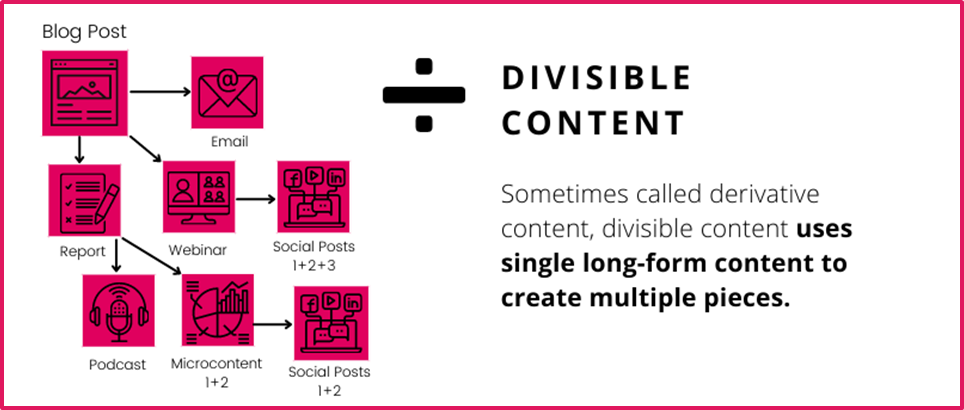
For example, think of an ebook or report created to define your brand message, values, history, and achievements. Such an asset could easily be 10,000+ words, from which you can directly pull blog posts, infographics, video scripts, tweets, and many more.
Instead of having to write these smaller posts from scratch, you can simply pull a chapter or two, connect them, and get them posted within a very short time. However, for this to work, you would need the original asset to have a certain divisible quality to ensure that the different portions (divisibles) of the text can stand independently with very little reformatting.
A divisible content strategy is an amazing approach because it saves you a lot of time and effort, not to mention money. It allows you to create cohesive content quickly and ensure sustained compliance while maintaining consistent messaging on different channels.
For your nonprofit marketing, this is a great strategy because you can use a divisible content strategy to stretch your communications campaign effort from a one-time (one-month or quarterly) thing to much longer. In its simplest form: reference your organizational calendar, pick the major moments out and create a divisible strategy around those campaigns.
2. Additive Content
Additive content is the inverse of divisive content. In this case, it involves creating smaller pieces of matching content that can be combined to build a bigger content asset. Like Legos or Jenga pieces, each of the smaller pieces of content will be purpose-designed to fit into the larger asset while retaining the flow of ideas, language, tone, and messaging.
In other words, additive content is like an anthology of stories that can be published under one name. One instance of where you might want to consider additive content strategy is when you want to create pillar content or an in-depth resource such as an impact report.
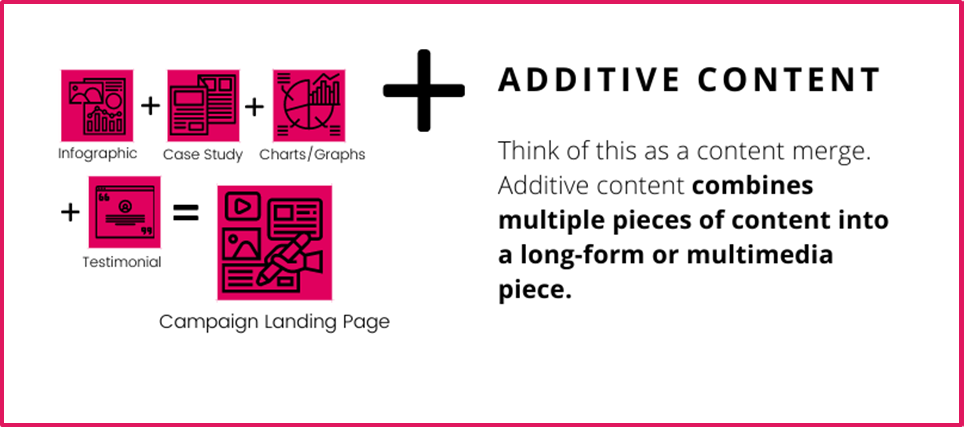
Instead of going back to the basics for research, writing, auditing, editing and compliance checks, you simply piece together the new resource from existing bits and pieces – blog posts, articles, infographics, videos, images, and all that. You can even piece together social media posts to tell stories. (Heck, you might be able to do a keyword search in your owned content and find all these related pieces quite easily!)
When you already have some great content or your various channels, you can save time and money by picking out the best bits and combining them to make a blockbuster “traffic magnet” (that can turn into a fundraising magnet!) This is an important part of a marketing plan because it also helps you to collect leads and drive publicity.
A note of caution: make sure to do a content audit first to ensure that everything fits, flows smoothly, and contains no outdated or conflicting information. Intimidated by the words content audit? Never fear – just create a spreadsheet of what you have. Your columns would be date, subject, platform, media type. From there, you can sort and group!
3. Multiplied Content
Multiplied content is all about repurposing existing content for use on multiple platforms, called often as repurposing content. It’s also about bringing old content back to life and reusing it in different ways, provided that it is still valuable and relevant. I recently read a quote that had me in total agreement about this as a strategy, “On average, I repurpose a single article 10 times.” If this is not you yet, then this content strategy could be your winner.
Like most nonprofit organizations, you likely have tons of original content collected over time. These can be videos, images, social media posts (and quotes), blog posts, reports, and even ebooks. Instead of struggling to develop new content every other week or so, you can refresh that old content and market it to new audiences.
For example, if you have old Facebook videos, you can change it to square format and post them on Instagram, clip a few punchy sections for TikTok, create an audio file as a podcast, or share its transcript as a blog post.
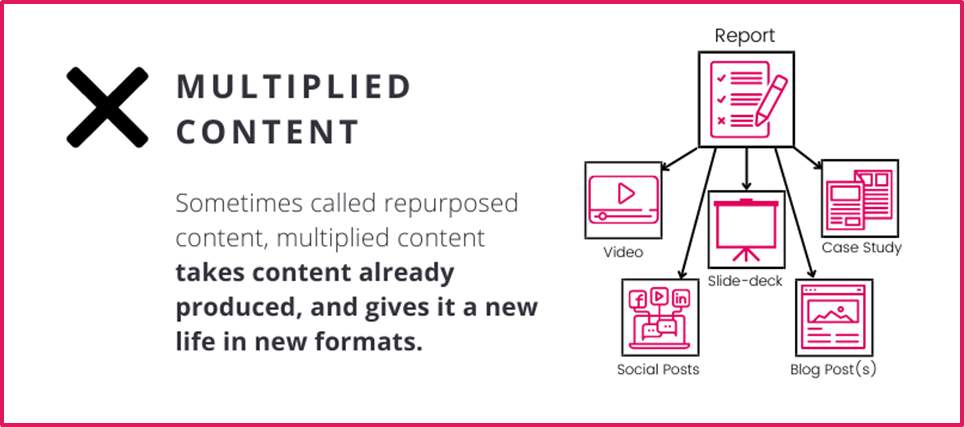
The concept of multiplicity is about increasing the distribution of existing content to new platforms and audiences. You get to marketing it afresh and continue driving visibility and engagement with the same content, which will be much cheaper than creating it afresh but just as effective.
4. Subtracted Content
Subtracted content is not a formalized approach to content strategy – at least, I’m not sure anybody else calls it that. (This is where I got crafty, but it’s a strategy I’ve used for years.) You can think of it as pruning and culling, an approach that seeks to expand the most fruitful subjects or topics to drive even more engagement.
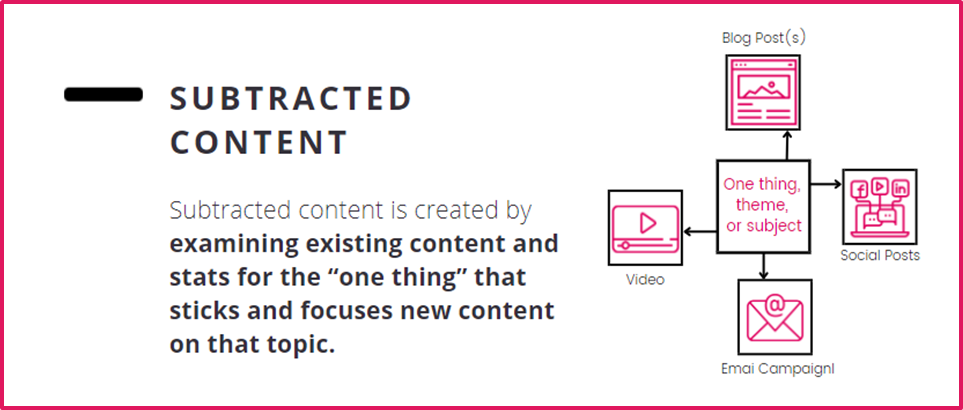
In subtracted content, you look at your website analytics to see which posts gained the most attention. What was it about that particular post or media that made it so valuable? Armed with that information, you can design your next editorial plan to extend that subject line and increase the potential for more interest from the audience.
I call it a subtractive strategy because it involves removing everything else that is not of value and focusing on the single most important subject. A lot of the time, you will also find that a particular series or linked articles have a common thread that makes them popular, which you can mine further for traffic and public interest. (Go ahead, mine your Google Analytics!)
The ABCs of Content Strategy for Nonprofits
This simplified approach to defining a content strategy (or strategies) forms the first steps of developing a plan tailored to the needs of your nonprofit marketing needs and resources.
But creating great content isn’t easy. It’s hard work. If you’re going to put time and resources into creating content make sure it works hard for you. If you need to some marketing momentum around your content strategy or plan, reach out to us, or watch the video below. We’d love to help.



